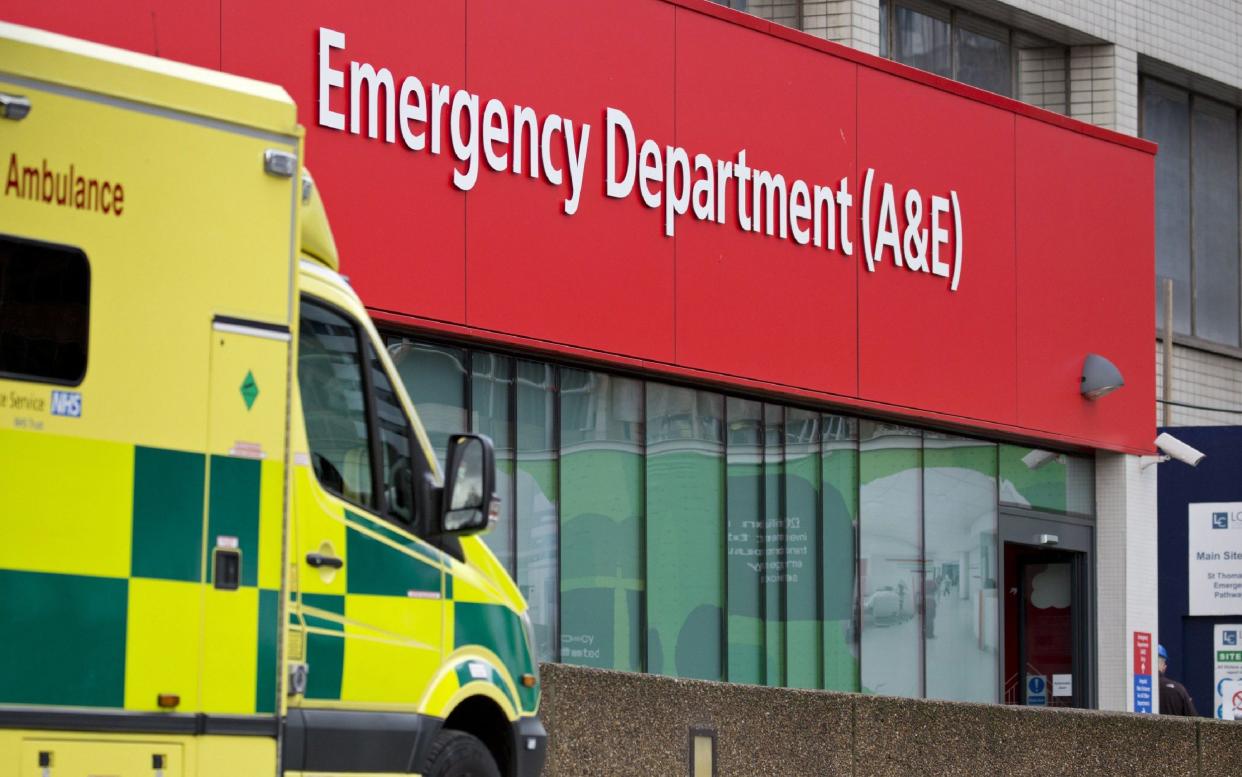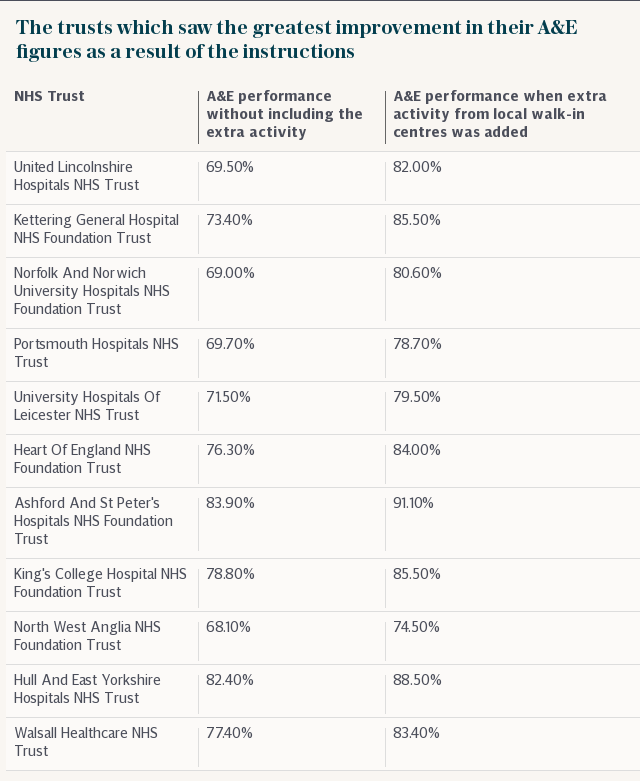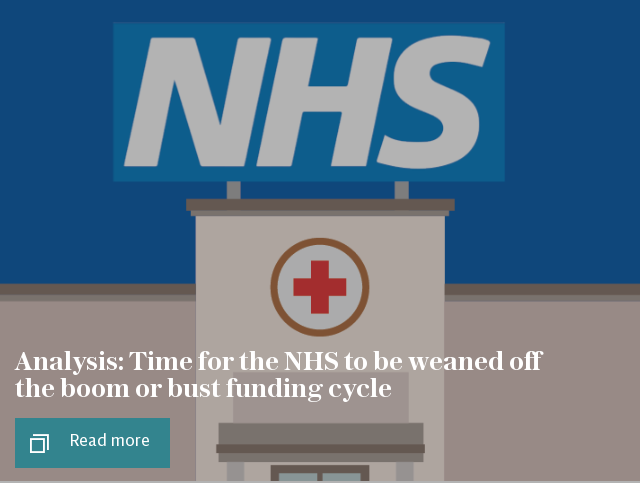NHS accused of fiddling A&E figures to downplay extent of crisis

The NHS has been accused of presenting Accident & Emergency statistics in a way which could “mislead” the public after trusts were told to change the way they report their data.
The UK Statistics Authority has written to health officials demanding explanations about the way performance against a target to treat A&E patients within four hours is being recorded.
It has highlighted a letter from watchdogs NHS Improvement which told trusts to start including statistics from local walk-in centres - even if they were not run by the hospital, or on their site - in figures measuring their A&E performance.
The changes, following instructions in October, mean some trusts appear to have made dramatic improvements in A&E performance, when in fact their waits are just as long.
As a result, United Lincolnshire Hospitals NHS trust was able to say that 82 per cent of patients were treated within four hours in December. However, if performance of local walk-in centres - including four run by another trust - had not been included, the figure would have been just 69.5 per cent, analysis shows.

Kettering General Hospital NHS Foundation trust saw a similar boost in performance, with a result of 85.5 per cent published, instead of the 73.4 per cent it would have achieved without adding in results from Corby Urgent Care Centre, run by GPs eight miles away.
And Norfolk and Norwich University Hospitals NHS Foundation trust achieved a figure of 81 per cent - when the figure would have been 69 per cent if it had not included figures from a local walk-in centre run by local GPs.
NHS Improvement said the letter was designed to address variation in the way A&E activity was reported, and ensure consistency. An NHS Improvement spokesman said: “This change was not intended to artificially inflate A&E performance figures."
A&E figures for November show a marginal deterioration over performance in October, when the instructions were given.
An NHS mapping exercise for December which was supposed to track the changes suggests national A&E performance would have been the same - at 85.1 per cent - regardless of the changes in the way data was recorded.
However, analysis suggests flaws in the published data, with a failure to properly record extra activity from walk-in centres.

For example, monthly NHS figures show that University Hospitals Coventry and Warwickshire NHS Trust treated 78.6 per cent of A&E patients within four hours in September, whereas the figure was 85.5 per cent in October.
Those changes came after a more than doubling in the number of patients counted from minor injury units, after figures from the City of Coventry Walk In Centre, run by Virgin Care, were added to the trust’s data. However, the NHS mapping exercise carried out just a few weeks later does not show any additional activity for the trust.
In the letter to NHS England, Ed Humpherson, director general for regulation at the UK Statistics Authority, tells health officials that the impact of changes to recording practice needs to be clearer.
“This will support better decision making and avoid users reaching misleading conclusions,” it warns.
In the same letter, it says statistics may in future be assesed against a code of practice, which would mean they would need to demonstrate that they “meet the highest standards of trustworthiness, quality and value, and as such can provide users with confidence in the statistics”.
The NHS may now have to consider reviewing the data published since it changed its reporting rules.

 Yahoo News
Yahoo News 
